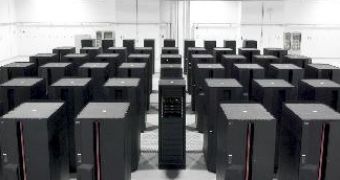Microsoft Windows Compute Cluster Server 2003 and the Linux OpenSuSE can coexist in a dual boot configuration on a High-Performance Computing cluster, but it requires advanced installation and configuration. Fortunately enough, Microsoft has supplied a document describing in detail the setting up of a High-Performance Computing cluster in order to be able to dual boot Windows Compute Cluster Server 2003 and Linux OpenSuSE.
"For a dual-boot installation, the Windows Compute Cluster Server 2003 OS and the Linux OS must be installed on each of the compute nodes of your cluster. There are several options available for OS installation. To operate in a dual-boot environment, Windows Compute Cluster Server 2003 and the Linux operating system must be installed on different partitions on the hard disks of all of the compute nodes. For Linux, two hard disk partitions are required. For Windows Compute Cluster Server 2003, one hard disk partition is required," Microsoft revealed in the document.
Creating a dual boot cluster is equivalent to maximizing the investment in resources, according to the Redmond company. Stressing the benefits of a dual boot cluster, Microsoft underlined the advantages in flexibility without additional investments in hardware. And the company's choice for the open source Linux operating system designed to run in parallel to its own Windows Compute Cluster Server 2003 is not random. As a matter of fact, in this manner, Microsoft is building upon its collaboration with Novell debuted in November 2007.
"Typically, a dual-boot configuration provides a boot menu that lets users choose which OS they want to boot. A boot menu will not work in a compute cluster dual-boot environment, however, because there are no users at the compute nodes. To switch between operating systems, the disk partition of the desired OS is flagged as active and the nodes are rebooted. This process can be automated by executing a task that runs on all of the compute nodes," Microsoft added.

 14 DAY TRIAL //
14 DAY TRIAL //